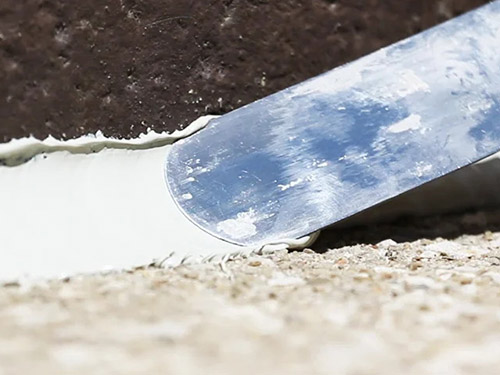Looking back just half a century ago, no one would believe that a building, let alone a skyscraper could be constructed using frameless glass as its entire façade. Now, modern architectural marvels such as the One World Trade Centre in New York and the Al Bidda Tower in Doha show a growing trend for architects to incorporate structural glazing into their building designs to create visually stunning and innovative glass curtain wall façades.

What is structural glazing?
In simple terms, structural glazing is where glass is assembled and bonded to the structure using a high strength, high-performance silicone sealant. Due to its and design flexibility and own load-bearing qualities, structural glazing is frequently used in the façade of skyscrapers. Skyscrapers generally refer to buildings that have more than 50 storeys and are therefore exposed to greater external stressors such as wind load.
What is wind load?
In short, wind load is the amount of force that wind exerts on a building or structure. For example, a 60-storey skyscraper will have a higher risk of tilting and collapsing due to wind load pressures as compared to a 6-storey building. Likewise, a building adjacent to a coastline normally would experience higher wind load as compared to one in a city. However, if the building is in a metropolitan city populated with many other high-rise buildings, it could experience accelerated wind speeds caused by wind vortices – swirling flows of air. When a vortex forms, it creates a suction force that can generate turbulence in a building, resulting in additional wind loads. It is this negative suction effect that architects are concerned with in terms of structural glazing.

There are basically 3 types of wind load:
- Uplift load – Wind pressures that flow upwards towards the roof, resulting in a pulling effect.
- Shear load – Wind pressures that flow horizontally parallel to the ground, causing a building to tilt.
- Lateral load – Wind pressures that flow horizontally against the structure, causing a building to slide off the foundation.
While wind load affects all structures regardless of the building material used, it is an especially critical factor for structures that have a glass curtain wall façade, since vibrations and motions caused by dynamic wind loads can undermine a building’s structural integrity.
How to Manage Wind Load and Structural Glazing
Skyscrapers usually use glass curtain wall façades because these glass panels that cover the building envelope often have a monolithic, frameless appearance which helps to increase space and natural light. However, to ensure that the glass curtain wall does not shatter or fall out, and that their structural design absorbs wind forces safely and efficiently, high strength structural silicone sealants are applied. Due to their superior adhesion of glass onto the aluminium frames and exceptional tensile strength, the structural silicone sealants can mitigate vibrations and support the transfer of dynamic wind load for 2-and-4-sided glazing.
Moreover, silicone is the only sealant type used as a structural glazing adhesive as it is non-organic and possesses superior UV resistance. This is relevant because structurally bonded glass is frameless, and the bonding silicone is exposed to sunlight (through the glass). Silicone sealants also have outstanding weathering resistance that protect against extreme temperatures and moisture to preserve its effectiveness. Furthermore, new technologies also enable structural silicone sealants to increase a building’s thermal efficiency while simultaneously reducing the potential for thermal breakage of the glass.
Single-source Glazing Solutions
Everything from glazing sealants, compatible gaskets, tapes, spaces, setting blocks and window-to-wall interfaces – Tremco CPG provides a fully-integrated line of weatherproofing products all from a single contact point.
Our high-performance products are separated into 3 categories:


 Sealants, Glazing and Façades
4 steps to applying the perfect sealant every time!
Sealants, Glazing and Façades
4 steps to applying the perfect sealant every time!
